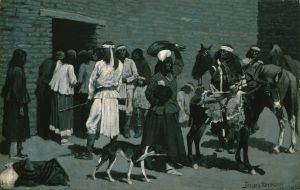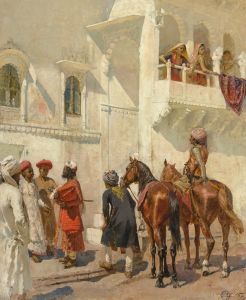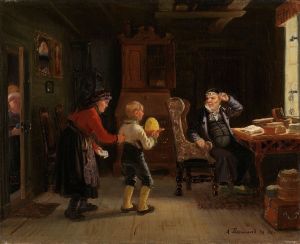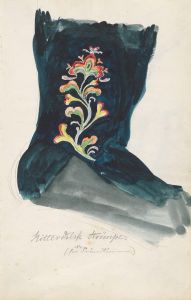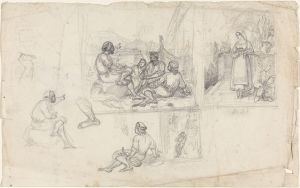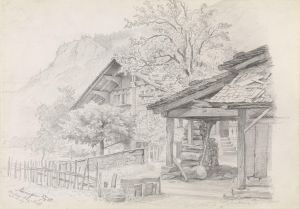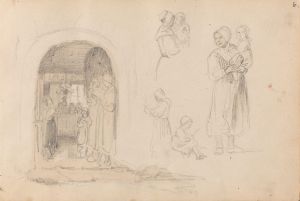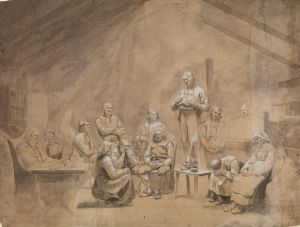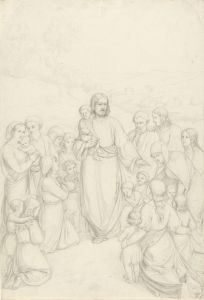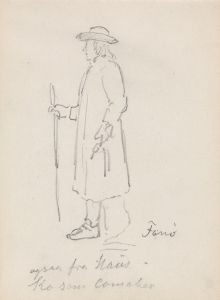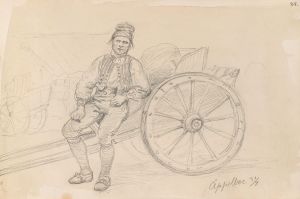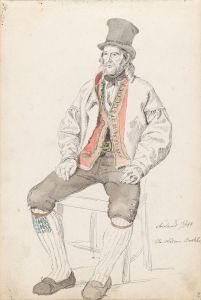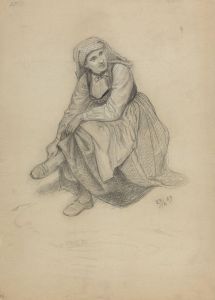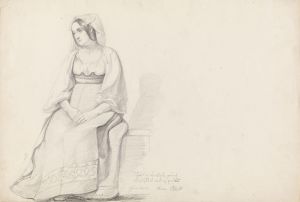
Jente i bunad, Oline, Bukken
A hand-painted replica of Adolph Tidemand’s masterpiece Jente i bunad, Oline, Bukken, meticulously crafted by professional artists to capture the true essence of the original. Each piece is created with museum-quality canvas and rare mineral pigments, carefully painted by experienced artists with delicate brushstrokes and rich, layered colors to perfectly recreate the texture of the original artwork. Unlike machine-printed reproductions, this hand-painted version brings the painting to life, infused with the artist’s emotions and skill in every stroke. Whether for personal collection or home decoration, it instantly elevates the artistic atmosphere of any space.
Adolph Tidemand was a prominent Norwegian painter, best known for his depictions of traditional Norwegian life and culture during the 19th century. Among his works is the painting "Jente i bunad, Oline, Bukken," which translates to "Girl in Bunad, Oline, the Goat." This artwork reflects Tidemand's dedication to capturing the essence of rural Norwegian traditions and the everyday lives of its people.
The painting portrays a young girl, Oline, dressed in a traditional Norwegian bunad, a type of folk costume that varies by region and is often associated with national pride and cultural heritage. The bunad in the painting is depicted with meticulous attention to detail, showcasing the intricate embroidery and vibrant colors characteristic of these garments. Alongside the girl is a goat, a common animal in rural Norwegian communities, symbolizing the agrarian lifestyle that was central to the country's economy and culture during Tidemand's time.
Adolph Tidemand was deeply influenced by the National Romantic movement, which sought to celebrate and preserve the unique cultural identity of Norway. His travels across the country allowed him to study and document regional customs, costumes, and traditions, which he then incorporated into his art. "Jente i bunad, Oline, Bukken" is an example of how Tidemand used his work to highlight the beauty and simplicity of rural life, as well as the strong connection between Norwegians and their natural environment.
The exact date of the painting's creation is not widely documented, but it is consistent with Tidemand's broader body of work, which often focused on themes of Norwegian identity and heritage. The painting is representative of his skill in combining realism with a romanticized view of his subjects, emphasizing their dignity and connection to tradition.
Adolph Tidemand's works, including "Jente i bunad, Oline, Bukken," remain significant in Norwegian art history. They provide valuable insights into the cultural and social fabric of 19th-century Norway and continue to be celebrated for their artistic and historical importance.





